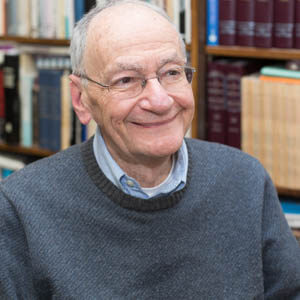
Shabbat: A Temple in Time
Feb 26, 2000 By Ismar Schorsch | Commentary | Ki Tissa
If “seeing is believing,” the converse of that adage is surely “out of sight out of mind.” There is something fragile about a faith predicated on sight. Remove its visible attendants and it soon collapses. What did Shakespeare say of another human state? “Love is not love which alters when it alteration finds, or bends with the remover to remove.” Constancy in love or faith soars above the transient.
Read More
How Close Is God?
Feb 17, 2001 By Ismar Schorsch | Commentary | Ki Tissa
From his first encounter with God at the burning bush, Moses displayed a penchant for deep knowledge. He needed to comprehend God before he was ready to face Israel and Pharaoh. He demanded to know God’s name, the key to God’s being. This week again, after the debacle of the Golden Calf, Moses returns for more illumination. To be chosen requires understanding the chooser.
Read More
The Spirituality of Kafka’s Doll
Feb 22, 2003 By Ismar Schorsch | Commentary | Ki Tissa
The story is told about Franz Kafka that the last time he visited Berlin, he chanced upon a little girl in a park awash in tears. When he inquired as to the reason for her distress, she sobbed that she had lost her doll. Compassionately, Kafka countered that not to be the case. The doll had merely gone on a trip and, in fact, Kafka met her as she was about to leave. He promised that if the little girl would return to the park the next day, he would bring her a letter from her doll. And so Kafka did for several weeks, arriving each morning at the park with a letter for his new friend.
Read More
The Key to Salvation
Feb 26, 2005 By Ismar Schorsch | Commentary | Ki Tissa
The jarring truth about the episode of the golden calf is that it occurred at Mount Sinai.
Read More
The Polarities of Judaism
Apr 13, 2004 By Ismar Schorsch | Commentary | Ki Tissa | Shabbat Parah
The instructions of God to Moses concerning the building of the Tabernacle culminate with the command to observe the Sabbath. Holiness in time follows holiness in space. As the Tabernacle constitutes a sacred space in which the nearness of God is a felt experience, so the Sabbath is a portion of the week set apart to admit God into our lives. Whereas the holiness of the Sanctuary is sharply delimited and restricted in access, that of Shabbat is universally accessible. The Tabernacle is a public space, the community’s link between heaven and earth, administered by a priestly hierarchy and subject to laws of purity.
Read More
Moments of Intimacy with God
Mar 14, 2009 By Marc Wolf | Commentary | Ki Tissa | Purim
The unknown can be frightening. This week in particular, beyond the unknowns of the economic crisis that grips the world, we encounter insecurity in the Purim story, with God’s hand seemingly absent from directing the narrative. There is an uncertainty that the unknown breeds; we feel it deep within ourselves and struggle to overcome ambiguity through a search for assurance. What is and remains true is that the lesson of the day is consistent with the lesson of history—none of us is immune from the insecurity of the unknown. Even Moshe.
Read More
Continuing Our Ancestors’ Debate with God
Mar 9, 2007 By Stephen P. Garfinkel | Commentary | Ki Tissa
Location, location, location! That’s not only a mantra in real estate but is also, as we shall see, an essential component in understanding some key elements of Ki Tissa, this week’s Torah reading.
Read More
Listening: The Cornerstone of Leadership
Feb 23, 2008 By Charles Savenor | Commentary | Ki Tissa
In this week’s Torah portion, Ki Tissa, the Children of Israel stand at a crossroads between faith and fear, commitment and rebellion.
Read More


